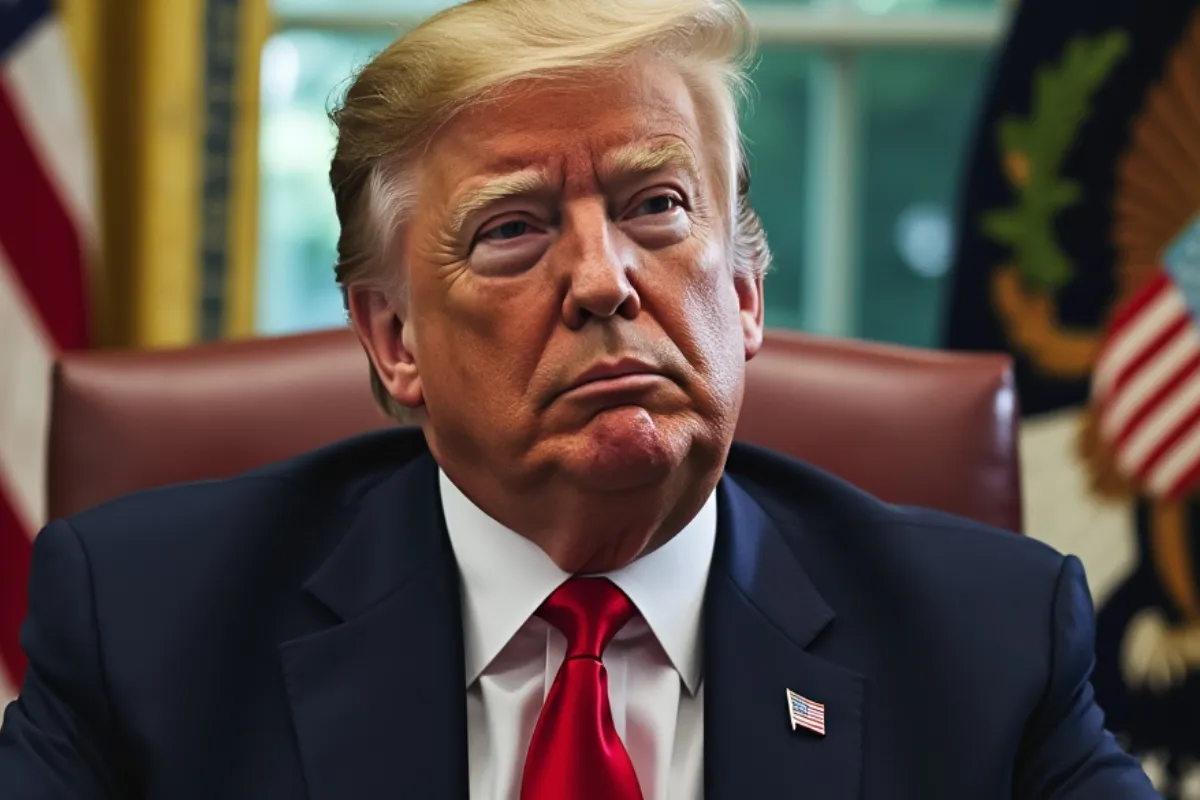BLOG

Trump 2.0 - What Can We Expect?
As long-time readers know, to determine potential future events I refer extensively to similar historical periods for insights and guidance of what the future may hold. The saying is very true “That if you don’t know where you’ve been you won’t know where you are going”.
The benefit of Trump 2.0 is the ability to do a deep dive into Trump’s first presidency, Trump 1.0, which was eight years ago and before the pandemic.
First, we need to know the economic background prior to Trump 1.0. The economy was slowly developing some momentum following the devastating 2008 Great Recession. The S&P 500 plummeted 56% from its peak on October 1, 2007, until the selloff finally bottomed out on March 9, 2009. It took four years for the index to recover from the selloff and on March 1, 2013, the index closed above its October 1, 2007 level for the first time. Over the next three years leading up to the presidential election, the S&P 500 climbed 24.6% for a total gain of 36.5% since the start of the selloff in 2007.

Like most other presidential elections, the 2016 presidential polling ranged dramatically with no clear certainty of the projected winner between Hillary Clinton and Donald Trump. The stock market does not like uncertainty and the institutional investors decided to sit on the sidelines dropping the S&P 500 index -10.51% by February 11, 2016. For the rest of the year, the index bounced around +- 5% for the YTD gains up to election day. Below are the quarter-end YTD total returns for the S&P 500 up to election day in 2016:
1.41% - YTD through March 31, 2016
1.31% - YTD through June 30, 2016
6.01% - YTD through September 30, 2016
4.68% - YTD on election day 2016

The uncertainty with investors caused Tuesday’s future trading for both Nasdaq and S&P 500 to fall so hard that they triggered a limit-down — the maximum amount by which they're permitted to fall before trading restraints kick in. However, on Wednesday, November 8, 2016, Trump was declared the winner of the election with 306 electoral votes vs 232 electoral votes for Hillary Clinton (Clinton had about 2.9 million more popular votes). Investors were very pleased with the results and stamped back into the stock market to double the year’s return in the last 42 days ending the year with a 9.54% gain.

Unlike 2016, the 2024 economy had good momentum with decades of low unemployment, net positive consumer growth of income and savings after inflation, and corporate growth in earnings. The Federal Reserve Goldilocks rate hike campaign in 2022- 2023 was significant enough to temper pandemic-caused runaway inflation but not too much to create a recession. The S&P 500 ended 2023 with an annual gain of 24.35% gain.
The 2023 economic momentum carried into 2024 along with the stock market rally. Even though interest rates have leveled off with fixed-rate mortgage rates in the high 6% range, millions of Americans had locked in sub-4% fixed-rate mortgages in the previous years. Consumer spending in 2024 continued to increase due to the combination of stable mortgage rates, a strong labor market, declining inflation (somewhere we are told), and rising consumer savings. Institutional investors were optimistic for the year and aggressively increased their stock holdings. Everyone that is except Warren Buffett who has been selling in 2024 portions of his monster holdings of Apple and Bank of America.
Below are the quarter-end YTD total returns and to election day for the S&P 500 in 2024:
10.61% - YTD through March 31, 2016
14.48% - YTD through June 30, 2016
20.81% - YTD through September 30, 2016
19.77% - YTD on election day
Big difference from 2016. Investors in 2024 either didn’t care about the outcome of the presidential and Congress elections believing any outcome was good for the economy or had a strong confidence that Trump would win the election. Over the many decades, I have been managing money and as a student of the stock market, I have been amazed at how accurately institutional traders are in predicting presidential elections. In hindsight, it seemed traders knew from January 1 that Trump would win, and when the election results were confirmed they became even more enthusiastic. On Wednesday, November 6, all major indices rallied with the Dow Jones Industrial Average jumping 3.5%, or about 1,500 points to close at a record and post its best day since 2022. The benchmark S&P 500 rallied roughly 2.5% to surpass the 5,900 level, while the tech-heavy Nasdaq Composite rose about 2.9%, also closing at an all-time record. Yesterday, the S&P 500 closed up 25.82% YTD.

What we can learn from Trump years
1. We are observing that institutional investors seem to be rotating their portfolios with a focus on sectors that may benefit from a Trump presidency. Since November 6, the following sectors have outperformed the S&P 500:
S&P 600 (small cap) - SPSM
Consumer Discretion - XLY
Financials and banking -XLF
Energy – XLE

However, during Trump 1.0 with the acceptance of XLY, all these sectors underperformed the S&P 500. Also, one of Trump’s campaign themes, “drill baby drill”, increased the supply of oil and gas with relaxed restrictions on the industry that lowered energy prices and oil company profits. During his first term, the energy sector ended down -37.17% by the end of his first term.

During Trump 1.0, investors enjoyed a growing economy rallying the S&P 500 index to multiple new closing highs increasing 50.54% by February 11, 2020. However, a significant selloff developed in the first quarter of 2020 that threatened all the gains earned since Trump became president despite a reasonably strong growth economy.
The spoiler was Jerome Powell, Federal Reserve Chairman, who announced the Federal Open Market Committee would commence with a rate hike campaign to slow inflation. President Trump and many analysts objected to the Fed’s policy with projections the rate hike would cripple the economy and potentially drive it into a recession. What followed was a historic wild ride in the stock market with the S&P 500 losing all its gains bottoming on March 23, 2020, with a loss of -0.06% since Trump became president.
The Federal Reserve rate hike campaign proved to be milder than feared with minimal impact on the economy. Investors capitalized on the huge stock market discount creating a tremendous rally with the S&P 500 soaring 67.77% in the next nine months to close out Trump's 1.0 term with a positive respectable gain of 67.77%.
Trump has not forgotten this episode and probably why he would want to replace Jerome Powell or that the president will have input to FOMC decisions to avoid another similar experience.

The technology sector during Trump 1.0 was also one of the strongest growth sectors. The leading tech stocks were Facebook (now Meta), Apple (AAPL), Amazon (AMZN), Netflix (NFLX), and Google (GOOG) referred to as the “FAANG” stocks. FAANG stocks were the darling of institutional investors during Trump's presidency as investors drove up their stock prices. All the FAANG stocks outperformed the S&P 500 during Trump 1.0. AAPL was the top-performing stock during this period gaining a whopping 358.3% or nearly 6X better than the S&P 500. NFLX and AMZN were close behind with gains of 336.8% and 334.3% respectively.

What Does This Mean to Me?
It is not often we have good reference data of prior similar economic conditions to determine the potential risks and rewards of a possible repeating situation. The events and circumstances during Trump’s first presidency, Trump 1.0, have both similarities and differences to possible events going into Trump 2.0. Based on similar investor responses in 2016 and 2024, it is fair to conclude that the institutional investor community is satisfied with another Trump presidency and immediately began adding stocks to their portfolios. This is good news for retail investors who can benefit from the continued positive trend of the stock market.
However, there are also risks that may develop in the next four years that developed during Trump 1.0. We are not done with our research on Trump 1.0 and will keep you posted as we continue looking into what may be the opportunities and liabilities during Trump 2.0.
Give us a call to schedule a time to review your financial and investment situation. We welcome the opportunity to assist you and your family in achieving your goals for 2025.
CONTACT
Check the background of your financial professional on FINRA's BrokerCheck.
The content is developed from sources believed to be providing accurate information. The information in this material is not intended as tax or legal advice. Please consult legal or tax professionals for specific information regarding your individual situation. The opinions expressed and material provided are for general information, and should not be considered a solicitation for the purchase or sale of any security.
We take protecting your data and privacy very seriously. As of January 1, 2020 the California Consumer Privacy Act (CCPA) suggests the following link as an extra measure to safeguard your data: Do not sell my personal information.
The information on this website is the opinion of Up Capital Management and does not constitute investment advice or an offer to invest or to provide management services. Before purchasing any investment, a prospective investor should consult with its own investment, accounting, legal, and tax advisers to evaluate independently the risks, consequences, and suitability of any investment.
Copyright 2024 | Privacy Policy | Terms & Conditions

